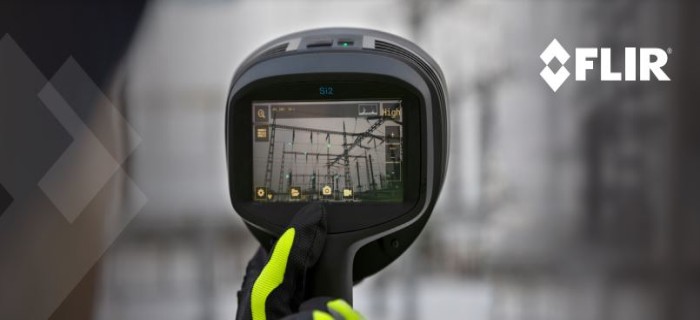
Maintaining NFPA Guidelines: Partial Discharge Testing Can Include the Use of Acoustic Imaging
19 Oct 2024
The latest NFPA 70B guidelines include a requirement for partial discharge testing. This can be addressed in an easy way using ultrasonic acoustic tools.
Partial Discharge, or PD, is electrical discharge often caused by a localized reduction in the effectiveness of an electrical insulator. There are three modes of partial discharge:
• Corona (conductor to air)
• Tracking (surface or internal discharge through or across a physical insulator)
• Arcing (phase to phase or phase to ground)
PD can create several hazards to plant safety and equipment reliability, the most impactful being arc flash, but also evolution of electro-magnetic waves, nitrous oxides, and volatile compounds from the degeneration of insulating materials. PD faults can also affect power quality.
The most common way to detect PD is through the use of ultrasonic acoustic tools. The use of ultrasound wavelengths helps to eliminate a lot of the background noise that exists in most plants and partial discharge faults typically radiate significant amounts of ultrasound. PD in components can eventually result in a local temperature rise that can be detected with a thermal camera, however this does not always occur prior to functional failure.
It is important to be aware that thermally visible faults, often caused by electrical power transforming to heat due to electrical resistance, and partial discharge faults, are two different modes of failure, with different modes of detection and quantification. A tool made to detect heat cannot be relied on to detect PD, and vice versa.
PD faults are most common with higher voltage equipment, which is why NFPA 70B only requires PD inspections on equipment over 1000 Volts, with the exceptions of busways and medium voltage (MV) and power and distribution transformer windings, which must be inspected if >600 V.
Use of airborne ultrasound technologies, including the FLIR Si124 and the new Si2, may be appropriate for use cases classified in NFPA 70A as Category 1A (Online Enhanced Test), for these applications, and for some uses cases is the required inspection technology. Like thermography, PD testing and surveys must be conducted at least yearly for most applicable electrical assets and is detailed in Chapter 9 of NFPA 70B.
Historically, airborne ultrasound (UT) technology has been limited to single-transducer detectors, sometimes with parabolic cones to help scan UT sources at long distances. While effective, the technology required significant time for training and experience.
In recent years, the use of ultrasonic acoustic imaging has grown rapidly, leveraging the inherent safety benefits of airborne ultrasound, but with scanning speed and ease of use that are unheard of in single-transducer systems. This rapid evolution has culminated in the FLIR Si2, our new flagship ultrasonic acoustic imager, which launched on March 5, 2024.
The Si2-PD and Si2-Pro ultrasonic acoustic imaging systems for PD inspections and surveys provides many unique benefits:
• Fast scanning with few misses. Wide-area scanning, combined for very high sensitivity means scans of large areas, such as substations, can be conducted very quickly with low risk of missed faults;
• Fault severity assessment and recommended actions. Faults are not only detected, they are also measured and evaluated for severity, resulting in minimal training and experience requirements for effective use;
• Strong Return on Investment (ROI). In addition to getting time back and catching more faults, the Si2 Pro provides improved ROI by finding and measuring mechanical bearing faults, compressed air, and compressed gas leaks, each of which has their own ROI for early fault detection.
• Made for scaling. The Si2 is unique capable of supporting scaled benefits to organizations through the ability to manage tool fleets across organizations. Through tool health metrics and organization data and image sharing, inspection managers can ensure their equipment fleet is maintained and data is being effectively gathered and shared



leave your comment